A panel of speakers discussed breast cancer prevention and research on Friday, Feb. 27 in Isla Vista Theater 2, in an event hosted by The Pink Link, UCSB’s new breast cancer research and awareness club.
About 40 people attended the Thermography and Breast Cancer Research Seminar, which featured speakers ranging from a breast cancer survivor to a UCSB professor researching the antioxidant properties of blueberries.
Audience members were given a basic overview of breast cancer, from its formation to its treatment, and learned about the somewhat controversial topic of thermography, an alternative detection practice which uses a heat scan of the body to locate possible abnormal cell growth.
“The point of the club and our events is to educate people, especially college-age women, about alternative procedures and research that can help them now or in the future since there’s so little information other than mammograms,” said Pink Link Vice President Erin Miller, who formed the club last October with other students who were surprised there was no breast cancer awareness club on campus. “A lot of young women don’t do anything about a lump because they think they’re too young to get cancer, but it happens every day. Being educated is the best form of prevention.”
CeCina Hines, who survived breast cancer five years ago, opened the seminar by sharing her experience of going from having a mammogram to a mastectomy in just two weeks.
“I just said, Ok, here it is. I’m taking it on and it’s going to work,” said Hines, who still has unanswered questions about her cancer. “Yes I was pissed at times, but I’m not angry that I got cancer, I found it to be much like a gift.”
Hines said that joking about her cancer and making art helped her maintain a positive outlook. The panelists agreed that emotional stress is a major factor in both developing and overcoming cancer.
“Some people in here will get breast cancer, and I just hope to God that you worry about it, you know what to look for, and how to keep yourself safe,” said Hines.
Dr. Christian Issels, who has a treatment center in Santa Barbara, presented an overview of breast cancer at the cellular level. He shared risk factors for developing breast cancer as well as numerous treatment options.
George Ayoub, professor of molecular, cellular, and developmental biology at UCSB, discussed his new research into the potential of blueberries to prevent cancer. He and other researchers tested the extract of European blueberries called bilberries on breast cancer cells.
“As we increased the concentration of the bilberry extract, we found there was a change, and the number of cells appearing decreased,” he said. “We observed that the higher doses stopped the cells from dividing, preventing mitosis. And very high doses actually killed the cells.”
The final topic of the evening was the use of thermography as a screening tool for breast cancer.
Jacalyn Kane, a local thermographer who advocates for the practice, said she believes mammograms cause more harm than good.
“I’m deeply concerned with the high rate of false positives and false negatives with mammograms, which lead women down a path of false hope and false despair. I’m also very concerned about the radiation and the compression of the breast.”
Kane said that the radiation omitted from one mammogram is the equivalent of one thousand chest x-rays. “The last thing you want to do is over-radiate yourself,” she said.
Kane went on to describe the process of getting a thermogram. “It’s a thermal image; it’s completely non-invasive; there’s no radiation, and it doesn’t touch you. It reads the physiology of heat coming off your body. From this, the thermologist can actually tell quite a bit if they see what we call “hot spots,” which may be nothing, but could be a precursor to cancer. It takes only one abnormal cell to show up on thermography, but it takes millions to show up on a mammogram.”
Kane said that following a thermogram, these hot spots should be investigated with other tools such as ultra-sound, and as a last resort, mammograms.
When asked why there is reluctance in the medical community to recognize thermography as an alternative screening tool, Kane said doctors are reluctant to deviate from what they’ve been taught. She also said that mammography is a money-making industry, and this complicates the issue.
Many physicians believe thermography should not be considered an effective method of detection until more research has been conducted. The American Cancer Society website says of thermography, “no study has ever shown that it is an effective screening tool for finding breast cancer early. It should not be used as a substitute for mammograms.”
Mary Ferris, Medical Director at Student Health, feels similarly about thermography, and is concerned students are being misled by the promotion of the practice.
“It’s an unproven screening tool and probably a waste of money,” said Ferris. “The harm is that it might find something suspicious that then needs to be investigated, costing you more money and grief when there’s really not a basis for it. The last thing I want is for women ages 20-30 to think they have to get a thermogram every year, because it’s not based in any kind of scientific evidence.”
Ferris agreed that the amount of radiation omitted by mammograms is of concern, but said mammography is still the most effective imaging tool for detecting breast cancer.
“Mammograms aren’t perfect. They can miss things that you can even feel sometimes, but in thermography, you don’t even know when it’s a false positive or a false negative; they just do not know how to interpret them.”
Ferris insists that she fully supports the presence of a club on campus promoting breast cancer awareness and new developments in research. “They should just be really careful who’s giving them their information and hear both sides of it,” she said.
Four free thermograms were raffled at the seminar, along with several other prizes. A Q&A session following the raffle was dominated by the subject of thermography, and afterward attendees were encouraged to go to Giovanni’s Pizza, where there was a fundraiser benefiting the club.
The Pink Link currently has 30 active members and meets about twice per month. The club plans on hosting a seminar next month to further discuss the findings of Professor Ayoub as well as begin a Health and Wellness Month. In May, The Pink Link will participate in the American Cancer Society’s Relay” said Miller. “Instead of telling people about numbers and death rates, we get out information about how people can help and change these rates.”

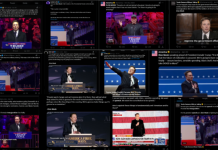

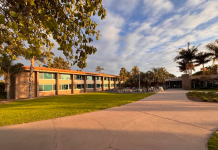
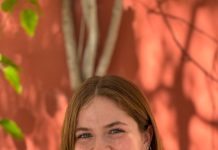
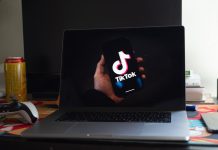
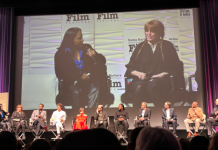




Comments are closed.